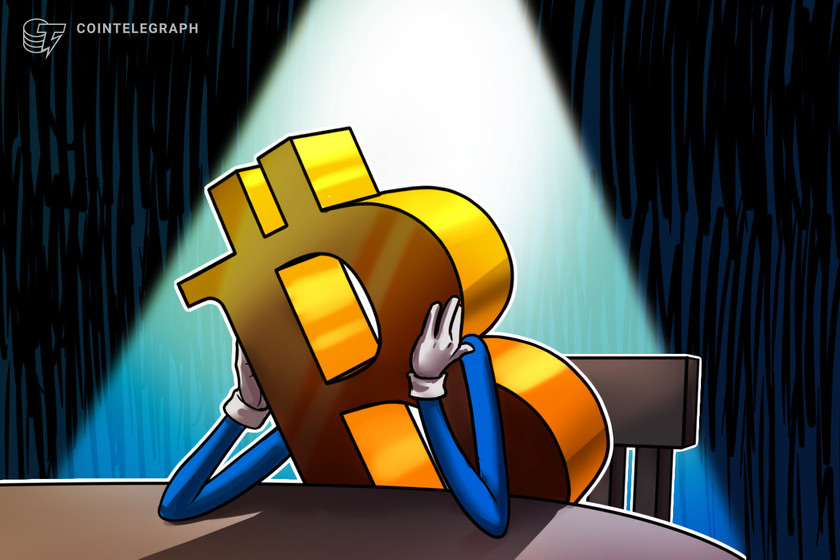New report: El Salvador Bitcoin pump failed to attract smart money, for now

Bitcoin market sentiments remain skewed to the downside even after it becomes a legal tender in El Salvador following a parliamentary nod.
Bitcoin (BTC) logged its best daily performance on Wednesday since Feb. 8, the day Tesla announced that it had added $1.5 billion worth of BTC to its balance sheet.
The flagship cryptocurrency surged 11.98% to $37,573 after El Salvador President Nayib Bukele passed legislation that approved it as a legal tender. In short, the Central American nation will now be able to price goods and services in BTC and will even accept the cryptocurrency for tax payments.
Meanwhile, Bukele clarified that his government would not impose capital gains tax on Bitcoin investors. He also announced that El Salvador would use excessive volcano energy to mine the cryptocurrency, weeks after Tesla CEO Elon Musk ended its Bitcoin payment support over its alarming carbon footprints.
I’ve just instructed the president of @LaGeoSV (our state-owned geothermal electric company), to put up a plan to offer facilities for #Bitcoin mining with very cheap, 100% clean, 100% renewable, 0 emissions energy from our volcanos
This is going to evolve fast! pic.twitter.com/1316DV4YwT
— Nayib Bukele (@nayibbukele) June 9, 2021
Bearish sentiment prevails
But El Salvador’s benchmark step to legitimizing Bitcoin as an upcoming store-of-value failed to generate bullish reactions from “smart” investors, according to Lennard Neo, head of research at Stack Fund, a Singapore-based crypto investment fund.
The chartered financial analyst said that Wednesday’s upside sentiments in the Bitcoin market remained weak even after the El Salvador news. The popular Fear & Greed Index pointed towards “extreme fear,” while contracts of Bitcoin derivatives from smart money were net short during the BTC/USD’s 11.98% rally.

Trading activity also looked frail, noted Neo, adding:
“We should not expect a significant impact on Bitcoin for a country with a GDP per capita less than 7% that of US, with its economy suffering the worst crash in decades last year.”
Ben Lilly, an analyst at Jarvis Labs, provided further anecdotes on why bearish continuation remains a real risk even as Bitcoin posts its best daily candles in months. He flashed at the latest spike in BTCUSD Shorts, a dataset that records the number of margined short positions on Bitfinex exchange, on the same day the pair rallied in spot markets.

Dramatic escalation in BTCUSD Shorts typically leads to declines in the Bitcoin spot rates. Conversely, a crashing BTCUSD Shorts signals an imminent price rally.

Pablo, whales, etc.
Meanwhile, Lilly also brought back “Pablo” into his bearish analogy.
The analyst conceived the make-believe character last year to refer to a Bitcoin wallet owner that, according to him, played a major role in dumping and pumping BTC/USD markets on various occasions, including March 2020 crash.
Lilly warned that the anonymous trader still sits atop a Bitcoin stash that he might dump later. He added:
“Pablo doesn’t look to be quite done. He has been making moves periodically since Monday and still has another round sitting in the chamber.”
The CVD indicator added to the Bitcoin market’s bearish bias. The indicator, shared by Lilly, implied a spike in Bitcoin selling orders having volumes between $100,000 and $10M.

Lily said that market movers are not behind the El Salvador Bitcoin price pump, noting that “they are letting price move about unencumbered.”
“Wherever it lands, it lands.”
Meanwhile, Bitcoin Dominance Index, a gauge to measure the benchmark cryptocurrency’s strength against its rival cryptos, surged from 41.28% to 44.23%.

The move uphill suggested that traders offloaded their altcoin positions to seek opportunities in the Bitcoin market, especially as the cryptocurrency became an official legal tender in El Salvador.




